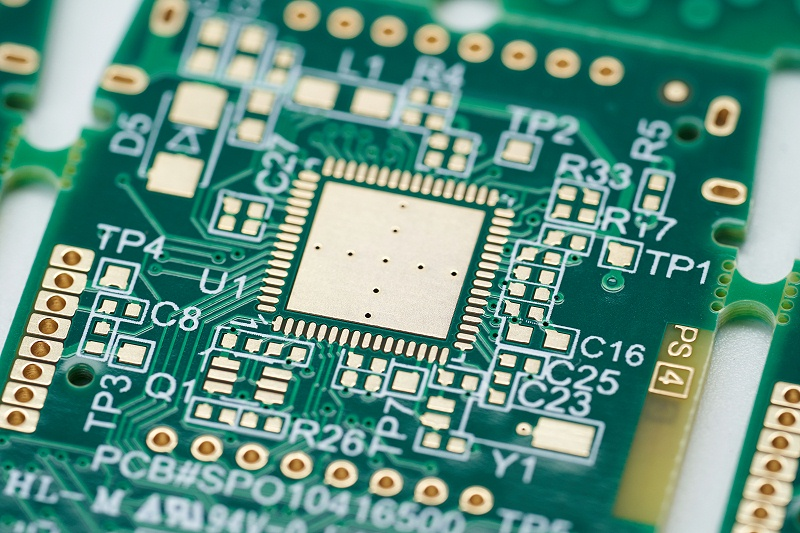 English
English-
 English
English -
 Español
Español -
 Português
Português -
 русский
русский -
 Français
Français -
 日本語
日本語 -
 Deutsch
Deutsch -
 tiếng Việt
tiếng Việt -
 Italiano
Italiano -
 Nederlands
Nederlands -
 ภาษาไทย
ภาษาไทย -
 Polski
Polski -
 한국어
한국어 -
 Svenska
Svenska -
 magyar
magyar -
 Malay
Malay -
 বাংলা ভাষার
বাংলা ভাষার -
 Dansk
Dansk -
 Suomi
Suomi -
 हिन्दी
हिन्दी -
 Pilipino
Pilipino -
 Türkçe
Türkçe -
 Gaeilge
Gaeilge -
 العربية
العربية -
 Indonesia
Indonesia -
 Norsk
Norsk -
 تمل
تمل -
 český
český -
 ελληνικά
ελληνικά -
 український
український -
 Javanese
Javanese -
 فارسی
فارسی -
 தமிழ்
தமிழ் -
 తెలుగు
తెలుగు -
 नेपाली
नेपाली -
 Burmese
Burmese -
 български
български -
 ລາວ
ລາວ -
 Latine
Latine -
 Қазақша
Қазақша -
 Euskal
Euskal -
 Azərbaycan
Azərbaycan -
 Slovenský jazyk
Slovenský jazyk -
 Македонски
Македонски -
 Lietuvos
Lietuvos -
 Eesti Keel
Eesti Keel -
 Română
Română -
 Slovenski
Slovenski
PCB manufacturers take you to understand, how to identify the advantages and disadvantages of the circuit board substrate
2023-11-09
Customers in the selection of PCB board factory, most rarely design PCB board materials research, dealing with the board factory is also mostly a simple stacking process structure of the communication. jbpcb tell you: in fact, to assess whether a PCB board factory meets the requirements of the product, in addition to the cost considerations, process technology assessment, there is a more important evaluation of the electrical performance of the PCB substrate.
An excellent product must be from the most basic physical hardware to control the quality and performance, the usual practice is that customers put forward the PCB substrate test verification program, so that we PCB manufacturers in accordance with the requirements of the complete test report; or let us do a good job after the prototype boards are provided to the customer's own test. The next thing I want to talk about is the commonly used PCB substrate electrochemical test methods. Patiently read through, I believe you will definitely gain.

I. Surface Insulation Resistance
This is very easy to understand, that is, the insulation resistance of the insulating substrate surface, the neighboring wires must have a high enough insulation resistance, in order to play the circuit function. Pairs of electrodes are connected into a staggered comb pattern, a fixed DC voltage is given in a high temperature and high humidity environment, and after a long time of testing (1~1000h) and observing whether there is an instantaneous short-circuit phenomenon in the line and measuring the static leakage current, the surface insulation resistance of the substrate can be calculated according to the R=U/I.
Surface insulation resistance (SIR) is widely used to assess the effect of contaminants on the reliability of assemblies. Compared with other methods, the advantage of SIR is that in addition to detecting localized contamination, it can also measure the impact of ionic and non-ionic contaminants on the reliability of the PCB, which is far more effective than other methods (such as cleanliness test, silver chromate test, etc.) to be effective and convenient.
Comb circuit which is a "multi-finger" interlaced dense line graphic, can be used for board cleanliness, green oil insulation, etc., for high-voltage testing of a special line graphic.
II. Ion Migration
Ion migration occurs between the electrodes of the printed circuit board, the phenomenon of insulation degradation. Usually occurs in the PCB substrate, when contaminated by ionic substances, or substances containing ions, in the humidified state of the voltage applied, that is, the presence of an electric field between the electrodes and the presence of moisture in the insulating gap under the conditions, due to the ionization of the metal to the opposite electrode to the opposite electrode to move (cathode to the anode transfer), the relative electrode reduction into the original metal and precipitation of dendritic metal phenomena (similar to the tin whiskers, easily caused by short circuit), known as ionic migration. ), is called ion migration.
Ion migration is very fragile, and the current generated at the moment of energization usually causes the ion migration itself to fuse and disappear.
Electron Migration
In the glass fiber of the substrate material, when the board is subjected to high temperature and high humidity as well as long-term applied voltage, a slow leakage phenomenon called "electron migration" (CAF) occurs between the two metal conductors and the glass fiber spanning the connection, which is called insulation failure.
Silver Ion Migration
This is a phenomenon in which silver ions crystallize between conductors such as silver-plated pins and silver-plated through holes (STH) over a long period of time under high humidity and a voltage difference between neighboring conductors, resulting in several mils of silver ions, which can lead to degradation of the insulation of the substrate and even leakage.
Resistance Drift
The percentage of deterioration in the resistance value of a resistor after every 1000 hours of aging test.
Migration
When the insulating substrate undergoes "metal migration" on the body or surface, the migration distance shown in a certain period of time is called the migration rate.
Conductive Anode Wire
The phenomenon of conductive anode filaments (CAF) occurs mainly on substrates that have been treated with fluxes containing polyethylene glycol. Studies have shown that if the temperature of the board exceeds the glass transition temperature of the epoxy resin during the soldering process, the polyethylene glycol will diffuse into the epoxy resin, and the increase in CAF will make the board susceptible to water vapor adsorption, which will result in the separation of the epoxy resin from the surface of the glass fibers.
The adsorption of polyethylene glycol on FR-4 substrates during the soldering process reduces the SIR value of the substrate. In addition, the use of fluxes containing polyethylene glycol with CAF also reduces the SIR value of the substrate.
Through the implementation of the above test options, in the vast majority of cases can ensure that the electrical properties of the substrate and chemical properties, with a good "cornerstone" to ensure the bottom of the physical hardware. On this basis and then with the PCB manufacturers to develop PCB processing rules, etc., can be completed on the technology assessment.



